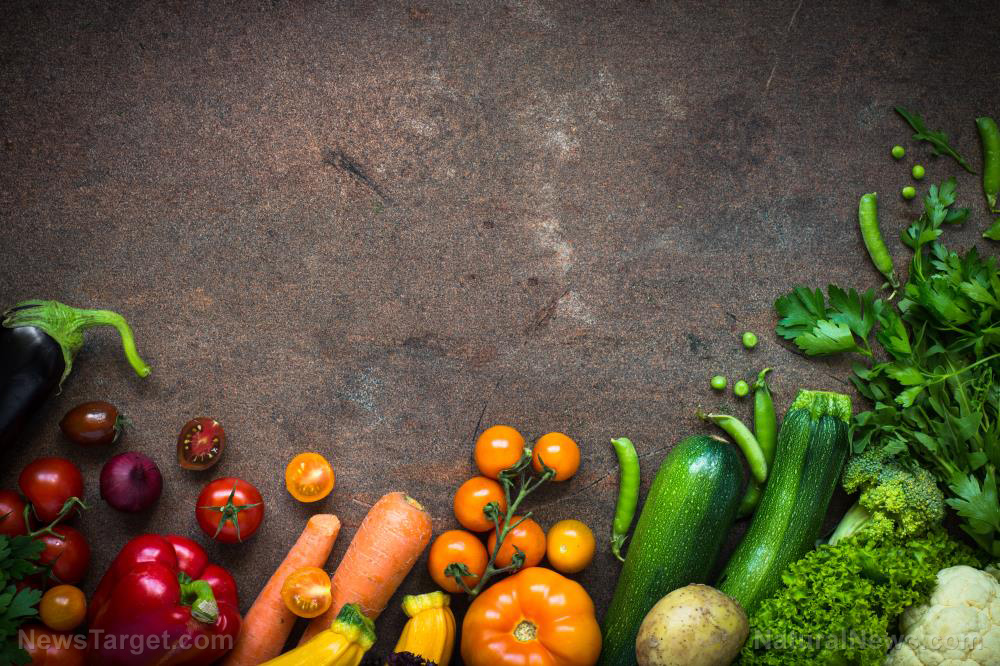
Advertisement
Being diagnosed with Type 2 diabetes doesn’t mean you’re stuck eating bland foods forever. You can still eat delicious meals, as long as they’re prepared using nutritious, fresh vegetables that can help manage your condition.
The key to following a balanced diet if you have diabetes is controlling portion size and following a menu full of dishes with beneficial nutrients. If you have Type 2 diabetes, eat a lot of fiber-rich vegetables that are low on the glycemic index (GI) scale. Foods full of nitrates will also help lower your blood pressure.
Low-GI vegetables
The GI ranking of food determines how quickly your body absorbs its glucose content.
The human body absorbs blood sugar faster from high-GI foods compared to low-GI foods. Eating a diet full of low-GI vegetables can help individuals with diabetes prevent blood sugar spikes. (Related: Sulforaphane-rich vegetables found to lower blood sugar in diabetics.)
If you have diabetes, you need to be careful about what you eat. Avoid high-GI foods like boiled potatoes, which have a GI of 78.
Here are other high-GI foods that you need to avoid:
- Cookies
- Doughnuts
- Energy drinks
- Instant noodles
- Jasmine rice
- Jelly beans
- Pretzels
- Red Pontiac potatoes
- Watermelon
- White bread
Individuals with diabetes can eat the following low-GI foods to their diet:
- Artichokes
- Asparagus
- Broccoli
- Cauliflower
- Celery
- Eggplant
- Green beans
- Lettuce
- Peppers
- Snow peas
- Spinach
Another thing to remember is the GI indicates a relative value to each type of food. It doesn’t define the specific sugar content of the food.
Glycemic load (GL) indicates how much glucose enters your body after consuming one serving of a certain kind of food.
Fiber
Fiber-rich vegetables are important in a glucose-controlled diet. Fiber helps prevent constipation and reduce levels of “bad” cholesterol.
Following a fiber-rich diet also promotes weight loss and management.
According to the American Academy of Nutrition and Dietetics, women need at least 25 grams (g) of fiber per day while men need 38 g. This recommendation may vary based on your body size, overall health, and other factors.
Increase your fiber intake by consuming these fruits and vegetables:
- Artichoke
- Avocados
- Beets
- Broccoli
- Brussels sprouts
- Carrots
- Split peas
High-nitrate content
Manufacturers often use chemicals called nitrates to preserve foods. However, some vegetables naturally contain nitrates.
Consuming fresh and natural nitrate-rich foods helps lower your blood pressure and promotes circulatory health. When buying groceries, opt for fresh vegetables that have a naturally high nitrate content.
Add these nitrate-rich vegetables to your diet:
- Arugula
- Beets and beet juice
- Celery
- Lettuce
- Rhubarb
Protein
Foods full of protein can make you feel full longer, which helps prevent the urge to eat junk foods between meals.
Consult your physician to determine daily protein recommendations that suit your condition. If you are highly active or pregnant, you may need more protein in your diet.
Add these protein-rich vegetables to your diet:
- Asparagus
- Bok choy
- Broccoli
- Brussels sprouts
- cauliflower
- Mustard greens
- Spinach
Meal suggestions for diabetics
To manage your diabetes, incorporate the healthy foods detailed above. When preparing your meals, avoid using too much salt or cooking with prepackaged ingredients full of sodium.
Try these ideas for healthy and incredibly delicious meals:
- Avocado, cherry tomato, and chickpea salad
- Hard-boiled eggs and roasted beets seasoned with black pepper and turmeric
- Quinoa on its own, or seasoned with pepper or vinaigrette.
- Spinach salad with bell peppers, chia seeds, tomatoes, and a bit of goat’s cheese to taste.
- Unsweetened Greek yogurt with fruit, quinoa, and a dash of cinnamon.
Don’t forbid certain types of food to prevent the feeling of deprivation, poor eating habits, and increasing your blood sugar. If you have diabetes, you should follow a balanced diet and occasionally indulge in healthier alternatives to your favorite snacks.
Eat different types of nutritious foods from all food groups and avoid eating at least two to three hours before you go to bed at night. Generally, 12 or more hours of nighttime fasting helps promote better glucose control.
Consult a dietitian for an individualized diabetes meal plan that can help you determine which foods will provide you with the nutrients you need. Consume these foods in the right proportions to maintain your overall health and manage your condition.
Sources include:
Advertisements







